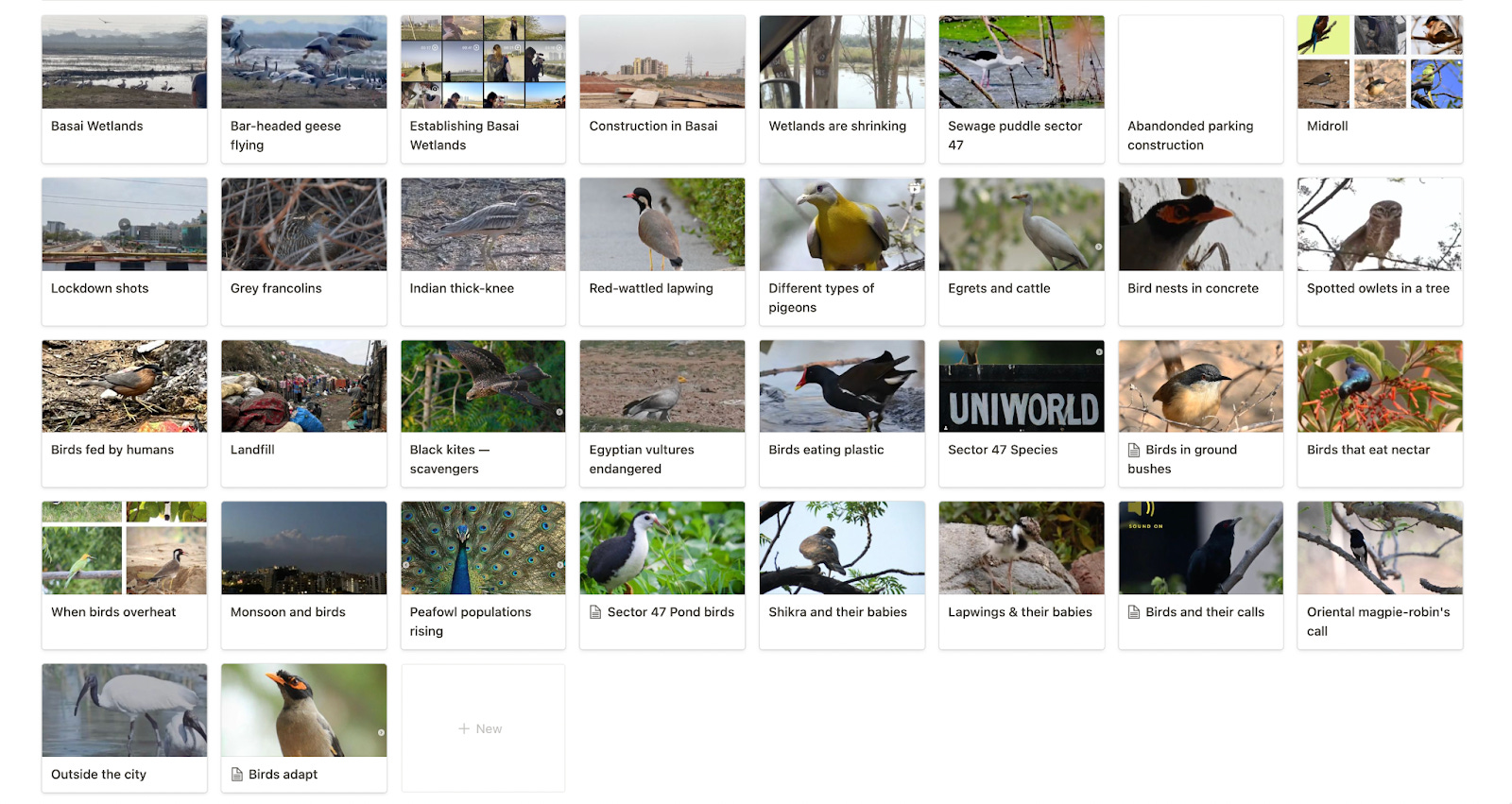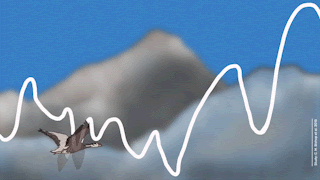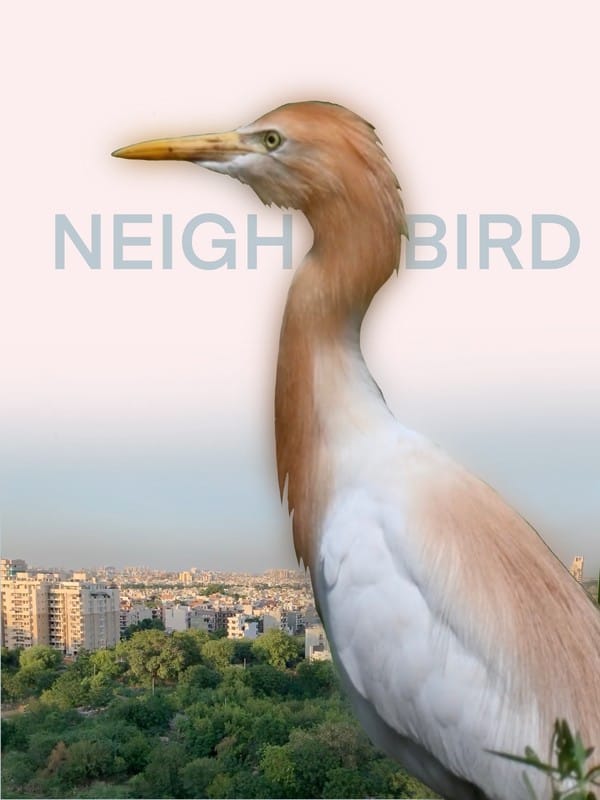Over the last couple of years, this newsletter has delivered tutorials, interviews and resources to your inbox. This year, you can expect more of it. If you’d like us to interview someone or cover a certain topic, do reply to this email. We love hearing from you.
This newsletter will continue to be a space to learn from other journalists. It’s also a space where you can expect a look behind-the-scenes of how journalists get the job done. From learning new technical skills to learning to be more inclusive. Since its inception, this newsletter has been written by multiple people, and we hope to continue to invite guest writers when possible.
In our first newsletter of 2022, we wanted to start by taking you behind the scenes of one of the projects we learned the most from in 2021 — Neighbird — our first longform documentary project. And when we say ‘we’ in this particular newsletter, we’re referring to Sanshey Biswas and Manon Verchot, co-founders of In Old News.
But before we get started, we just wanted to remind you that in the coming months we’ll be bringing you interviews with animators, reporters, editors and much much more. So, please recommend us to your friends or colleagues who might be interested via social and tag @inoldnews wherever you post.
Neighbird started by accident. When we first locked down in March 2020, it was scary. There were a lot of uncertainties and we didn’t know much about how COVID spread. So we started spending an hour or two per day looking at the green patch just outside our apartment complex in Gurgaon, India. We noticed beautiful birds like green bee-eaters for the first time, we spotted greater coucals, red-wattled lapwings… Even though we've been living here for a while, we had never noticed them before. We started to post photos and short videos on social media. Including a series of animoji videos where we talked about what we were observing.
But it wasn’t until 2021 (after a camera upgrade) that we realised we had enough footage and enough knowledge about birding in Gurgaon to put something much more ambitious together. That’s when we started talking about making a longer documentary. Something we had not done before. And the topic would be how birds survive in urban spaces.
Despite having 10 months worth of footage and photos, we knew we needed more small stories about different birds so that our documentary wouldn’t be just a collage of 10-second bird clips. We wanted to follow some of the birds we regularly see, but it can be hard to recognise specific individuals. We got lucky when a pair of shikras and a pair of lapwings had chicks right next to our building. We knew the spot where they nested and returned multiple times a week to shoot. We were able to follow the transformation from egg to juvenile over the course of weeks. We also got lucky when we stumbled upon an egret nesting ground while on a bike ride, which we were also able to document. But we weren’t only documenting bird life cycles, we were also documenting locations, like important wetlands and woodlands in the Delhi NCR region. So every few months we’d stop by these different locations. In the Basai wetlands, we were able to document how construction was encroaching on the wetlands over the course of a year. All of this was done with a mix of phone and camera footage. We needed a good zoom to get clear footage of the birds, so most of the bird footage in the documentary was from a Nikon Z6 II with a 600x zoom capacity. A lot of the landscape footage and scenery was shot on iPhones.
But shooting was just one part of the process. There were a lot of other tasks we needed to do and it was often hard to find the time outside work hours. It helped us to be able to break down our to-do list into smaller tasks. In March, we started with the outline of the script — identifying what bird footage we already had and what we could reasonably expect to capture in the coming months. By the end of April, we had a rough script which we had chipped away at a few hundred words whenever we could make time.
The entire scripting process took us months because we were working on other jobs, and because we were shooting throughout, so we came across new findings that we knew would be a good fit to add to our script. In May, we put together a rough storyboard so that we could visualise what each segment of the documentary would look like. Here’s a screenshot of that storyboard:

To put the storyboard together, we had to review over a year of footage and organise it into folders that would be easy to find and edit from. Each segment had its own folder, and we had a few miscellaneous folders too for segments like fillers or montages.
By August we were ready to record a rough voice-over and lay a rough timeline in the video editing software. This helped us identify any gaps in footage and script.
Between mid-August and mid-December, we found it particularly hard to make time for the documentary. But we chipped away at it whenever we could. We had a lot of pending miscellaneous tasks, like learning how to animate so we could do a segment on the bar-headed geese’s flight path, going back to our main locations to get some drone footage, tweaking the script, learning more about fixing audio so that we could have a clear voice-over and continuing to organise footage. It was a long checklist.

By December, we finally had time to wrap up the final pieces of the project. We had to re-record our voice-over (finding a quiet enough place where we weren’t interrupted every 5 minutes was hard). We had to finish the edit, add additional footage, make sequences and montages and colour correct the footage so that it wasn’t too jarring to go from one visual to the next. And we had to make the animations for the video. We used animations to make some of the studies being cited more visual.
We still have a lot of footage we didn’t use. But we felt like it was ready to publish. The question was, where? We spent a lot of time discussing whether we should publish this with a newsroom or one of our other channels that had more subscribers. We decided to stick with our personal channel, Neighbird, because we hope to make more urban and wildlife documentaries in the coming years, and we want to maintain full ownership over our footage. The independent journalism space is thriving, and there are lots of people working on projects that we’re very excited about. And yes, self-publishing does often mean sacrificing reach. At the time of publishing this newsletter, we have 512 views and 320 subscribers on the Neighbird youtube channel. But we’re ok with that, because in the beginning, it always takes time to build an audience.
And now, after the first month of organic reach, we’re going to experiment with other forms of reach like ads and boosting to see how much reach we can get through our own efforts. We’ll also submit it to some film festivals. If we learn anything interesting as we distribute this work, we’ll probably do a whole newsletter about it! We do these experiments because we find it interesting and we learn a lot through the process.
Let us know if you found this helpful and if you’re working on a passion project too? We’d love to hear from you.

